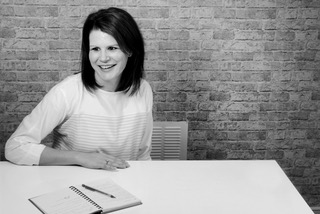Ever thought or talked about a particular challenge or problem til you were blue in the face? Going round and round the theory of how to tackle it, without ever reaching a solution?
Well, it may be that you are thinking about it too much. Research shows that in order for our creative problem solving abilities to come to the fore, we actually need to stop talking or planning, and get doing: experimenting with what we’re trying to tackle.
The Evidence
So why does ‘doing’ help improve your creative problem solving abilities?
Author and TED speaker Tom Wujec has studied collaborative creativity for a long time. One of his well known studies is the ‘build a tower’ test. Teams are given a yard of masking tape, 20 uncooked sticks of spaghetti, a yard of string and a marshmallow. Their brief is to build the highest structure they can to support the marshmallow at its top, in 18 minutes. He has given this test to many different types of people; from four year-olds and CEOs to business students and lawyers.
The teams that built the highest structure were the four year-olds.
The video below shows how Wujec discovered how the creative collaboration test was undertaken by different people.
Interestingly they do not waste time deciding who is going to be the leader, delegating tasks or detailing their plan of attack. Instead, they just get on and start building. They experiment fast and quickly work out where the problems lie. This is half the battle in innovation; knowing which problems are the right problems to solve in the first place.
The experiment shows that children think by acting, but as people get older and become more afraid of making mistakes they employ an insurance tactic: they begin to think before they act.
How to apply this to innovation
Innovate by doing. ‘Doing’ can come in many different forms. For example:
-
Writing a product descriptor in a number of different ways and not just one way
-
Drawing a rough concept to visualise a potential idea (even if it is just stick men!)
-
Looking at various alternative packaging options with a potential supplier and asking to be shown possibilities that could break the norm or push the boundaries
-
Getting out of the workplace and observing customers in the midst of using your product e.g. completing an online application form
Embrace the art of demonstration
If you have an idea that you know is going to be considered a ‘bit left of field’ or is going to be a tough sell-in, show people how it works with prototypes, have the concepts visualised, show clips of customers encountering a problem etc. On the other hand; don’t be too quick to close down other peoples’ ‘stupid’ or ‘strange’ ideas. Ask them to show you how it might work. Get them to demonstrate the problem and the possible solution. This might be a simple sketch, a business case or a sample etc.
See more on innovation
Are innovation labs the solution for corporate innovation?
Successful innovation: How businesses can achieve it more effectively
New innovations launched to help businesses drive growth
The rewards
You should see the benefits of ‘getting on and doing’ alongside encouraging others to ‘show you’ very quickly.
They are likely to include:
-
Not wasting time trying to solve the wrong problems
-
Getting to the right answer faster and with more confidence
-
Generating better quality ideas and ones that are based in reality
-
Making the ‘sell-in’ of your ideas easier
-
Fostering better collaboration from others
-
Increasing the possibility of interesting ideas coming from all parts of the business
So, next time you encounter a problem proving tricky to solve – drag yourself out of the theory and into the practical sphere. Try things out and experiment. You may well unlock the solution you have been looking for.
Shelly Greenway is partner and strategist at The Strategy Distillery






